Available on plans: Professional, Premier, Enterprise
Use the Mailchimp Plugin to create Mailchimp subscribers from new form responses, and update any existing subscribers.
✅ Add new subscribers to your subscriber list and optionally slot them into single or multiple groups, complete with options for conditional opt-in or always opt-in.
Setup the Plugin
Navigate to the Plugins tab on your selected form, choose “Mailchimp” then click the Connect to Mailchimp button to launch the authorization popup:

This opens an authorization window where you can select an account or sign in. Then click “Allow” to grant the Mailchimp Plugin permission:
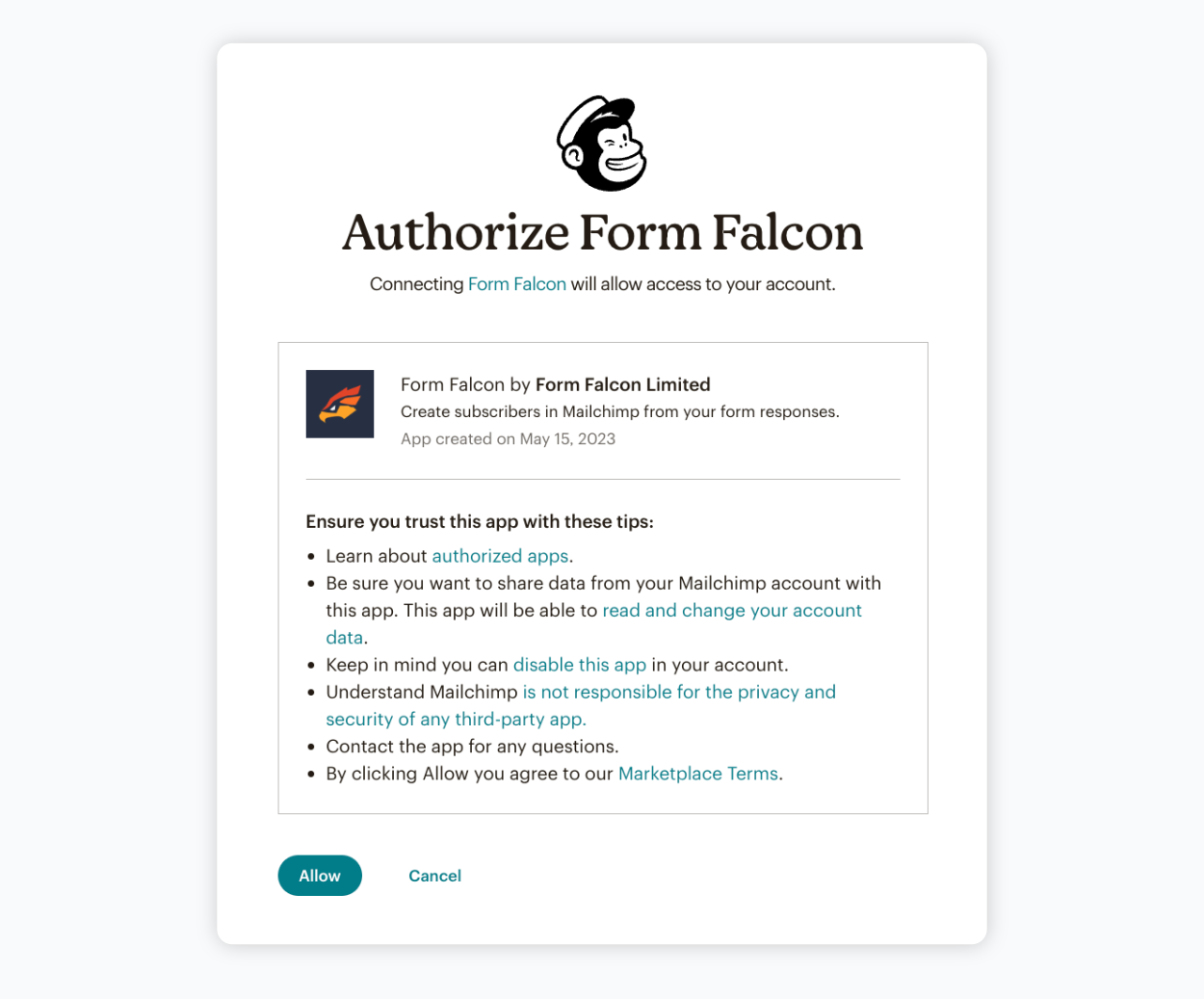
Once Mailchimp is authorized, we’ll display each Audience you can create new subscribers in. Select one, click Save, and you’re good to go:
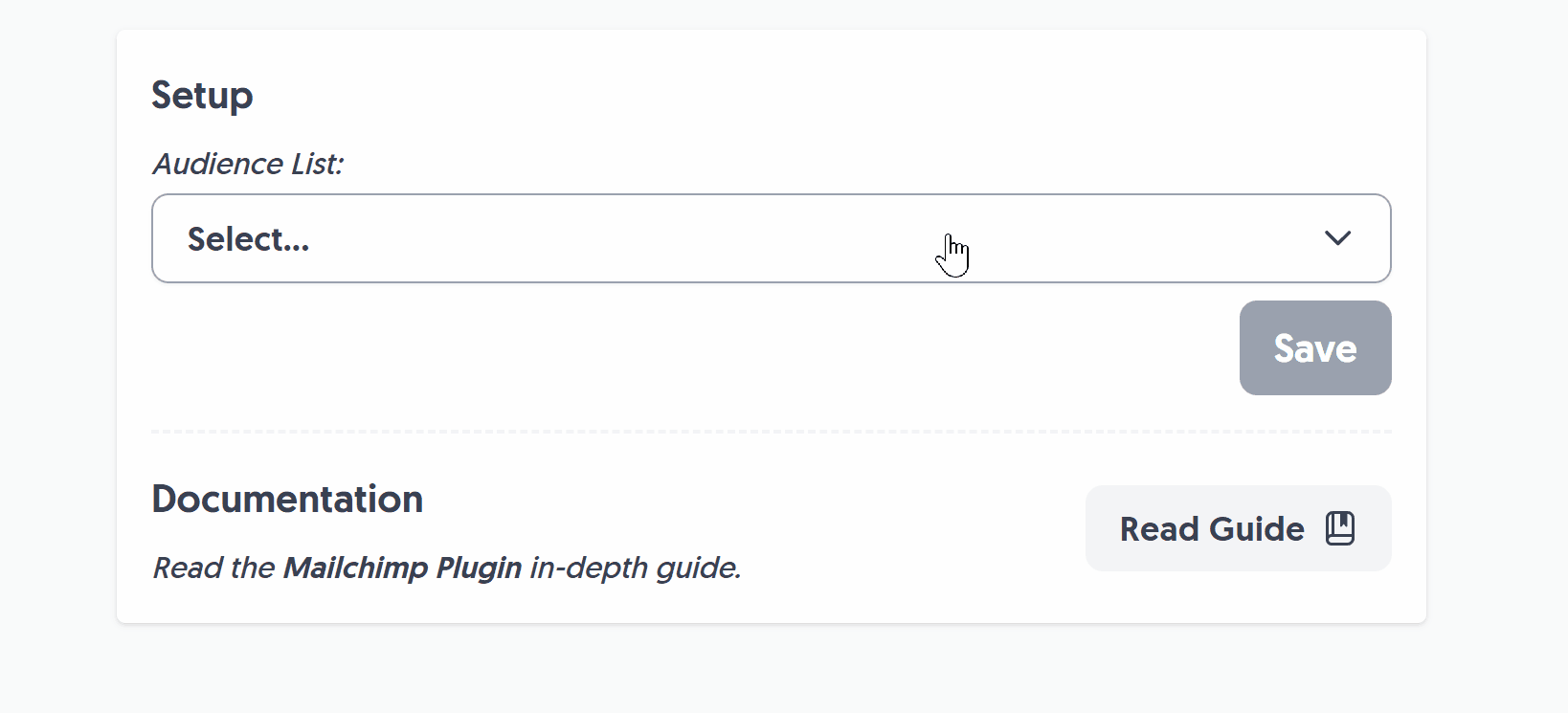
Once setup, you’ll see your chosen Mailchimp Audience name in the plugin configuration.
Create Subscribers with Mailchimp
Adding new Mailchimp subscribers is simple and offers you lots of flexibility on adding to single, or multiple groups, including additional metadata such as Name and Last Name fields, an Opt-In checkbox and more.
Merge Tags
Mailchimp uses the concept of “merge tags” to manage different properties of a subscriber, such as their First Name or Email.
Before we can sync any data to Mailchimp from our form responses, we need to locate the merge tags we need to use - then we’ll link them to relevant form fields.
Within your Mailchimp account, click Audience to expand and reveal All contacts:

Then click Settings to reveal a dropdown, select Audience fields & *MERGE* tags:
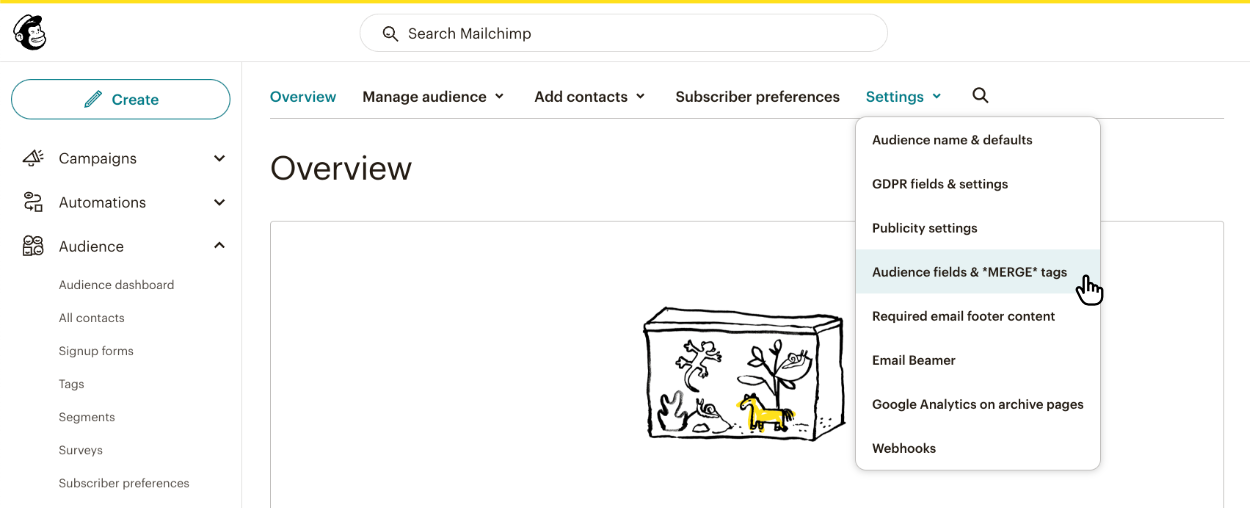
Which reveals the merge tags we need for each property name of a subscriber, highlighted blue:
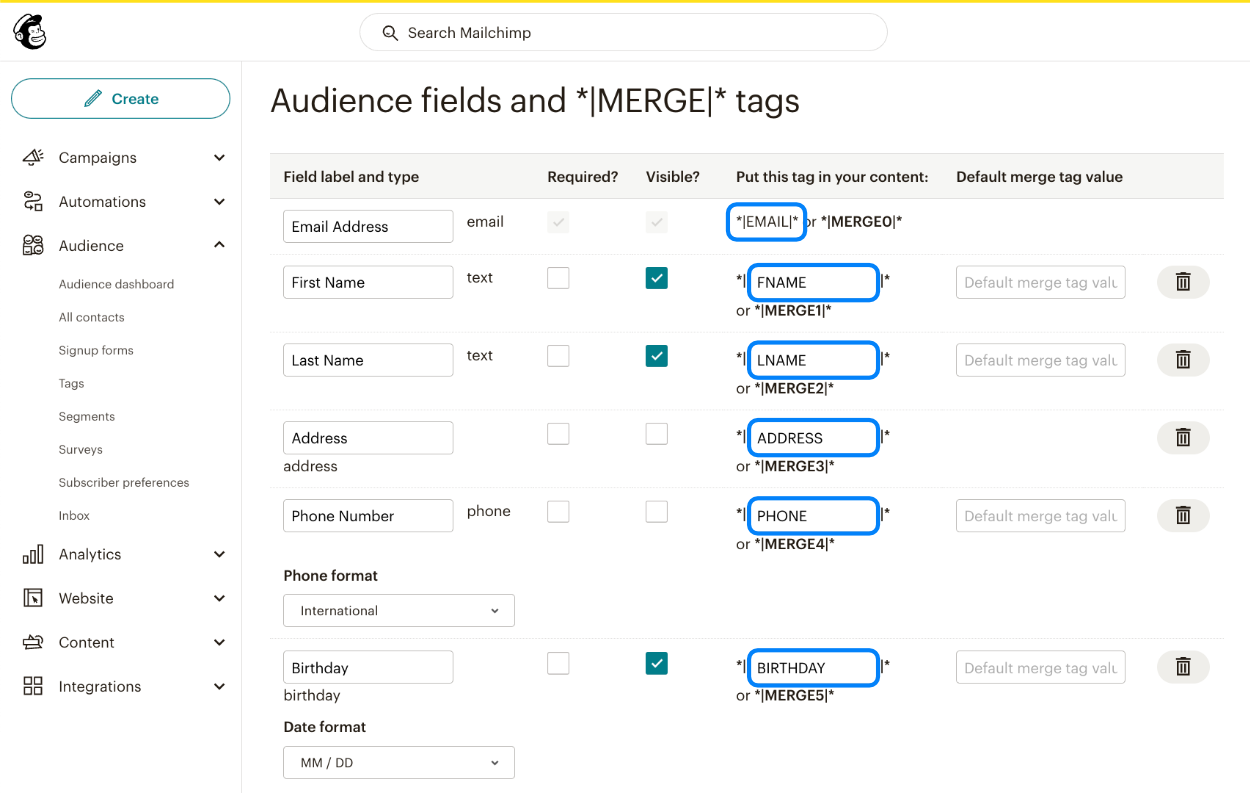
🚨 Word of Caution: Always use the merge tag name highlighted in blue, e.g., FNAME not MERGE1.
Here is the full list of Mailchimp field names for you to copy, you can pick and choose which to use for your form:
EMAIL- Subscriber email (always required)FNAME- Subscriber first nameLNAME- Subscriber last nameADDRESS- Subscriber address locationPHONE- Subscriber phone numberBIRTHDAY- Subscriber birthday
With this in mind, let’s follow up with a demonstration on integrating with a form.
Subscribe with Email
To add a new subscriber via their email address, add an Email Field and click “Edit” on the field, select “More Options”, and enter the merge tag EMAIL in the “Custom Name” field:

Now when we enter an email address into the form, it will connect that field with the Mailchimp Plugin to create subscribers from that field value:
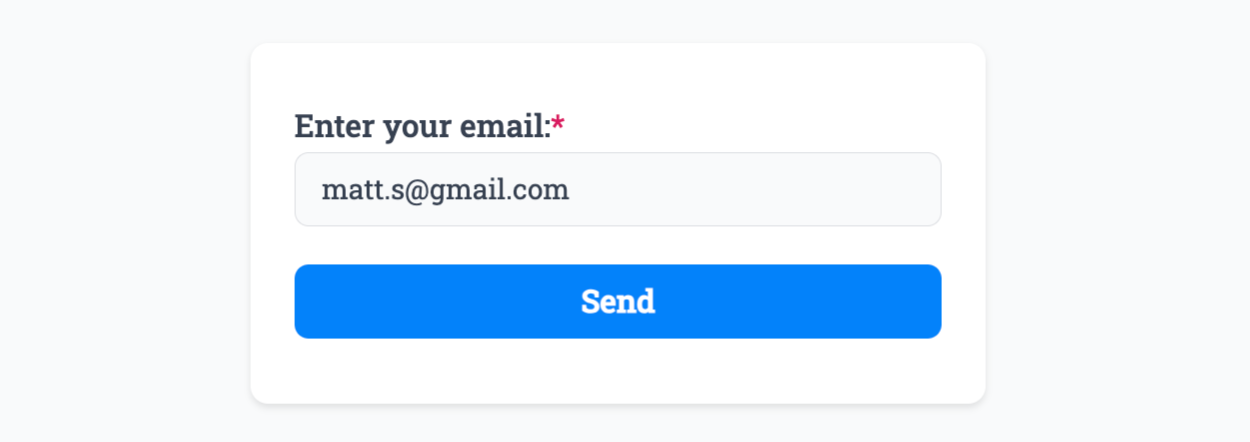 Field type ‘Email’, custom name is ‘EMAIL’
Field type ‘Email’, custom name is ‘EMAIL’The Mailchimp subscriber is then created from the email entered value when the form is submitted:

That’s it! The most basic subscriber setup. If you need extra field data, groups, opt-in checkboxes then keep reading.
Subscribe with Extra Fields
To subscribe a new email with extra field data such as their First Name, Last Name, Phone and more - we need to use Mailchimp’s Merge Tag names again as custom name values in form fields (in the same way we just added the ’email’ custom name value).
In the below form example, the “First Name” field’s custom name value is FNAME, the “Last Name” field’s custom name value is LNAME, and the “Enter your email” field’s custom name value is EMAIL:
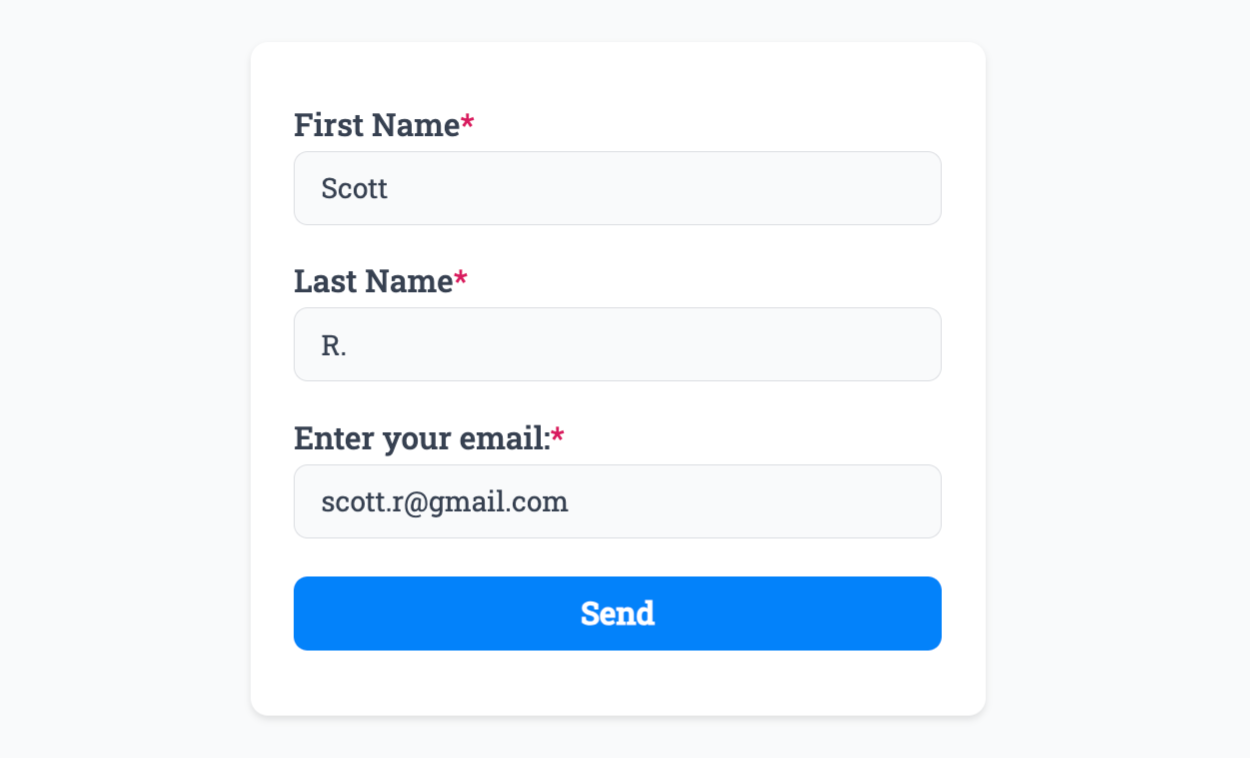
Then click the new subscriber to view the new extra data within Mailchimp to confirm the connection:

You can use any combination of the above Mailchimp field tags to compose the perfect form.
Adding to Group(s)
The Mailchimp Plugin fully supports adding new contacts to a single group or multiple groups.
Start by clicking Subscribers again and expand the Manage audience dropdown, then select Groups:
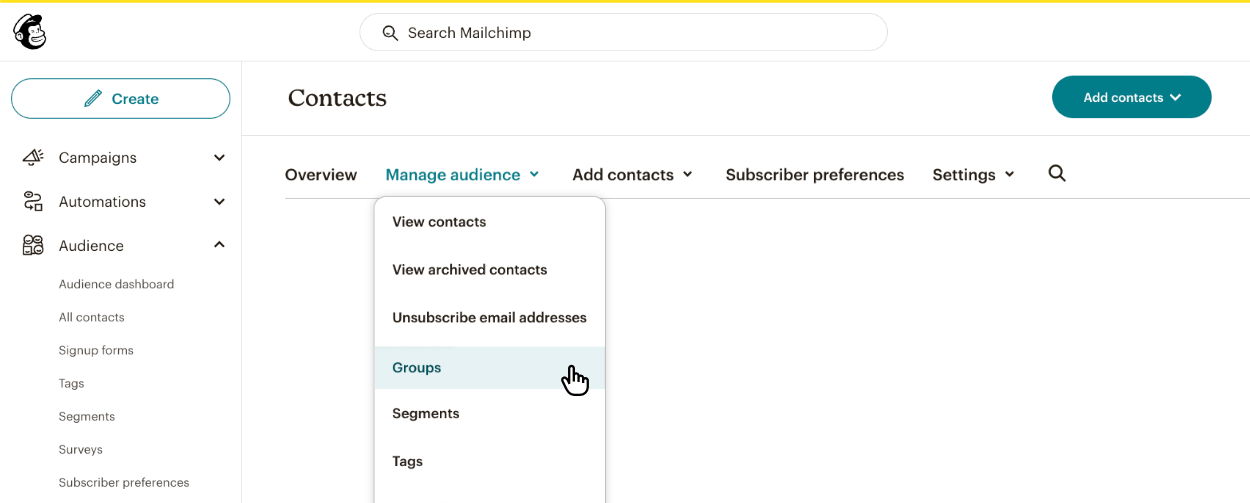
If you’re yet to create a group, click “Create Groups”:
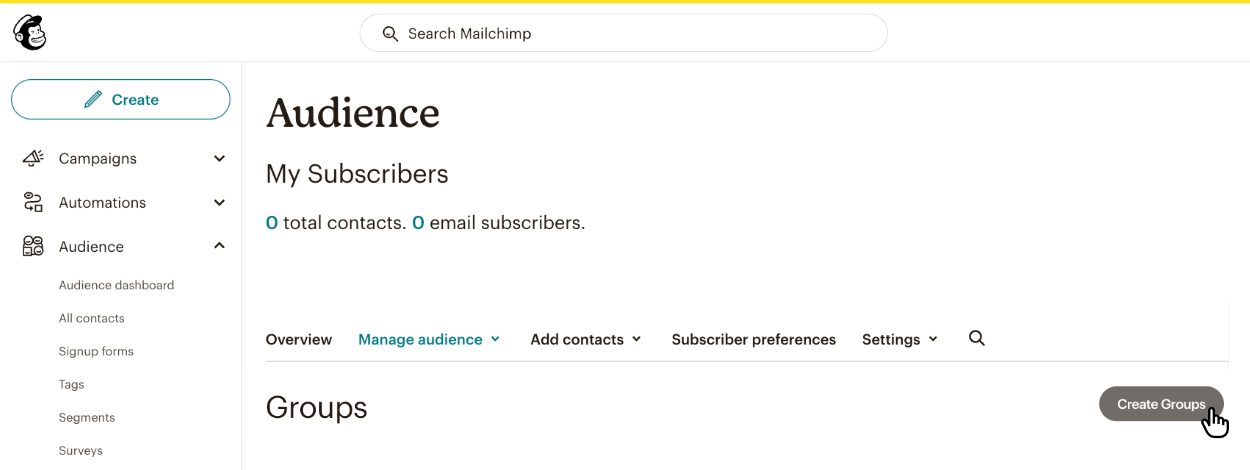
This expands a group creator set of fields, you can select “Don’t show these groups on my signup form”, and enter a Group category name, such as Interests. This “category” then holds our actual groups, let’s create three new groups called Arts, Technology and Science:

The Group category is important to us for telling the Mailchimp Plugin where the groups we intend to add a new subscriber are.
Single Groups: To allow the user of your form to be added to a single group you’ll want to use a Single-Select Field or Dropdown Field.
Multiple Groups: To allow the user to select multiple groups at once you’ll want to use the Multi-Select Field.
After adding either a Single-Select, Multi-Select or Dropdown Field to your form, click Edit and visit the Options list - and add each Mailchimp Group name, ensuring they are case sensitive. At the same time, enter the Group category name (Interests) as GROUP_INTERESTS into the custom name field - this must be prefixed with GROUP_ to tell the Mailchimp Plugin that it’s intended to be a group matching field - within the ‘Interests’ category:
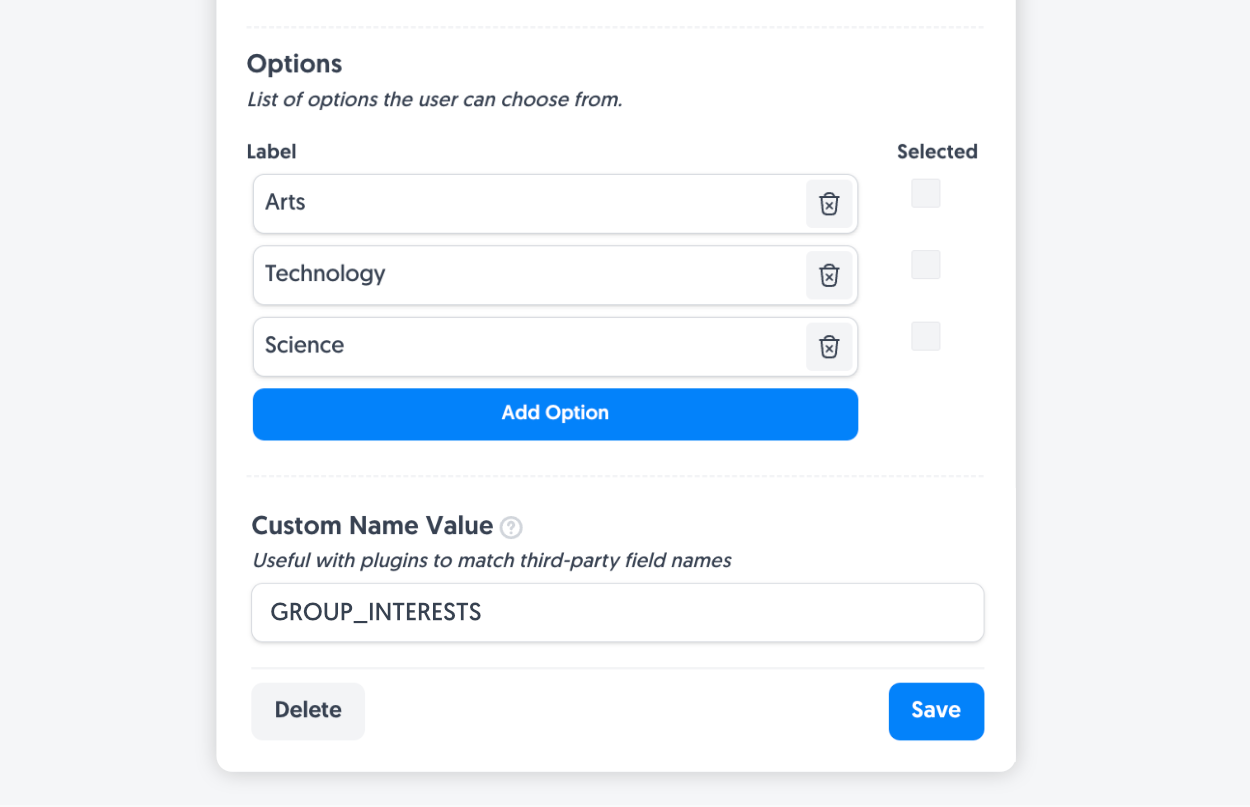
Publish the form and select a few groups, then hit submit:
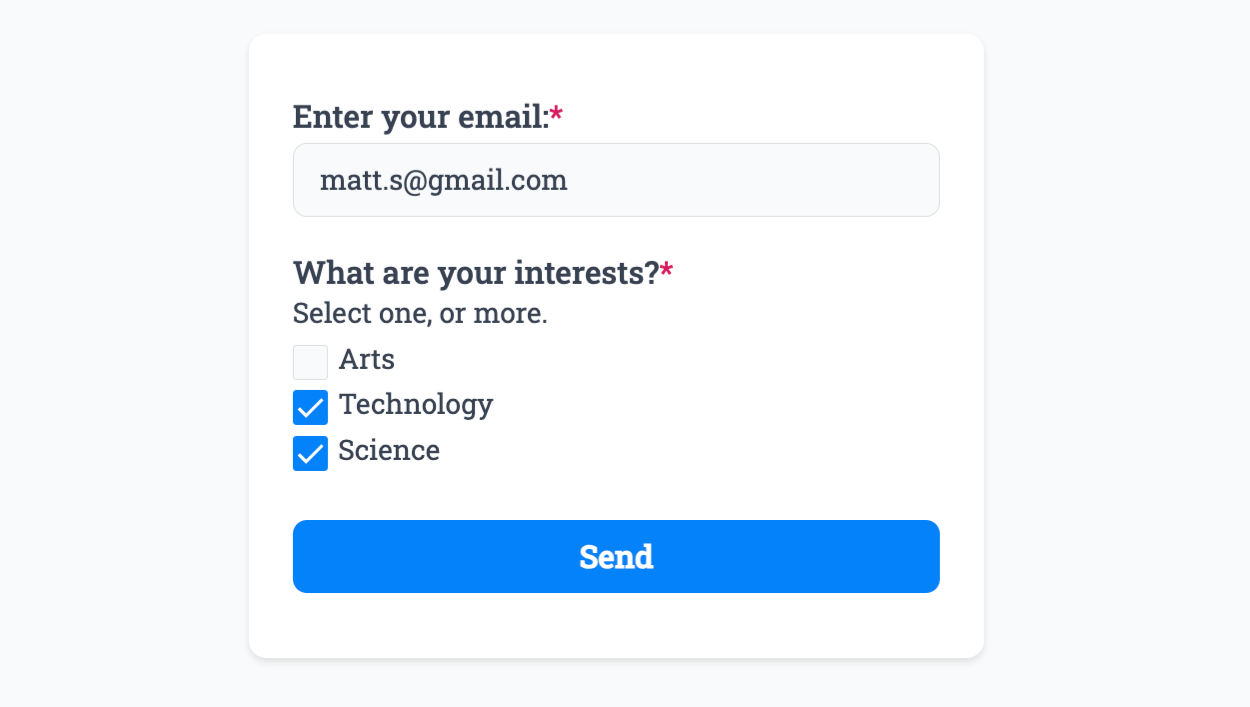
Then view the new group data within Mailchimp to confirm the connection:
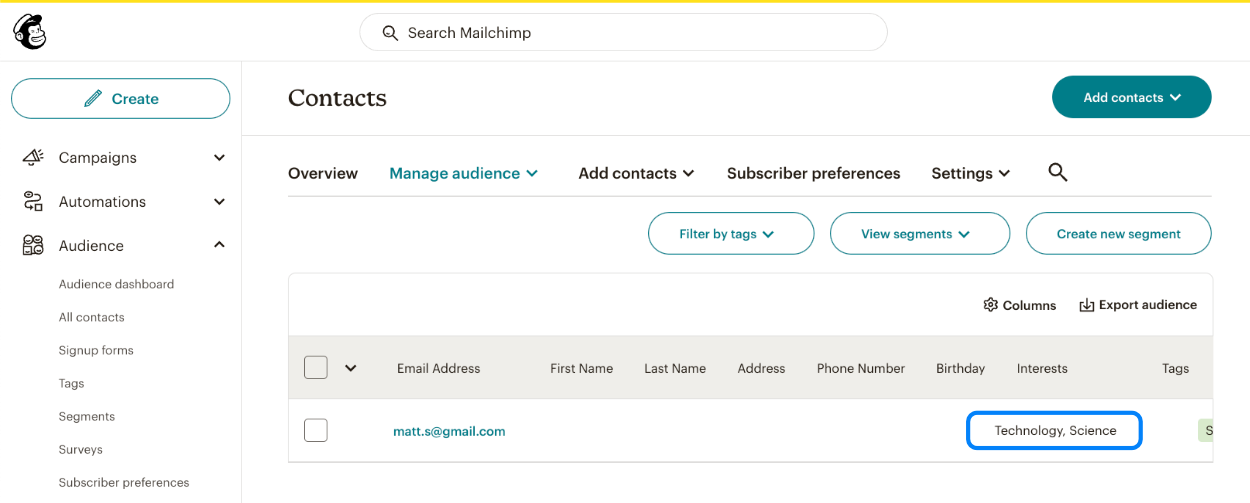
And the best part? You can repeat the process for more groups by creating even more form fields and linking them to other groups. The Mailchimp Plugin thrives on handling multiple groups simultaneously. Just create more Mailchimp groups, specify the group names as options, then add the GROUP_ prefix to a form field’s custom name value.
Auto-Add to a Single Group
To automatically add users to a single group, without them even knowing they’re being added to the group, you’ll want to opt for the Hidden Field in your form:
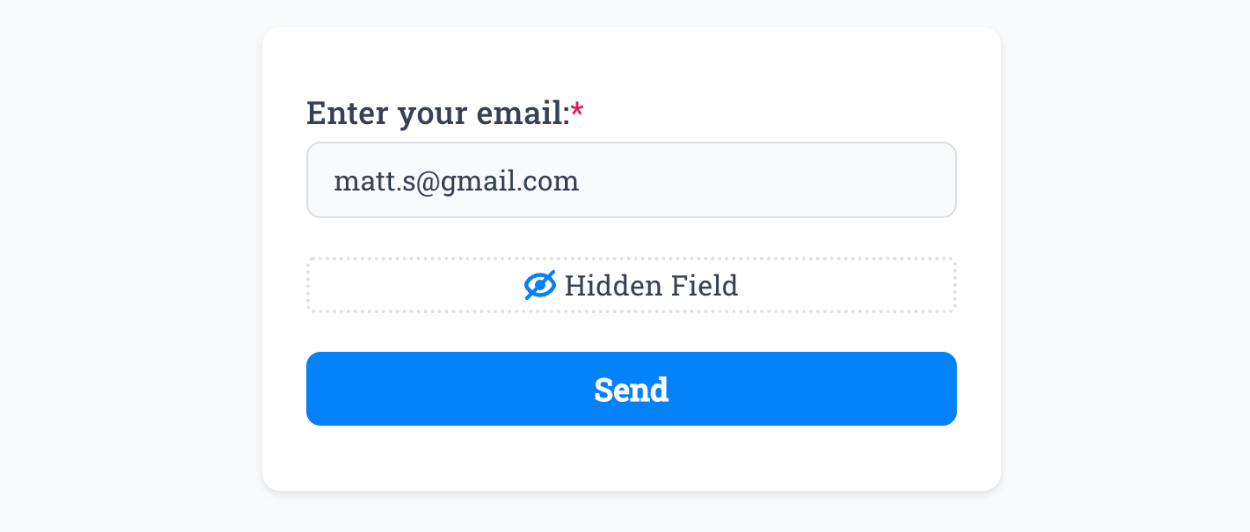 Viewing the form inside the Editor
Viewing the form inside the EditorOnce added, click Edit and you’ll see Key and Value. Enter a unique GROUP_ prefixed name into the Key field, followed by the group name inside the Value field:
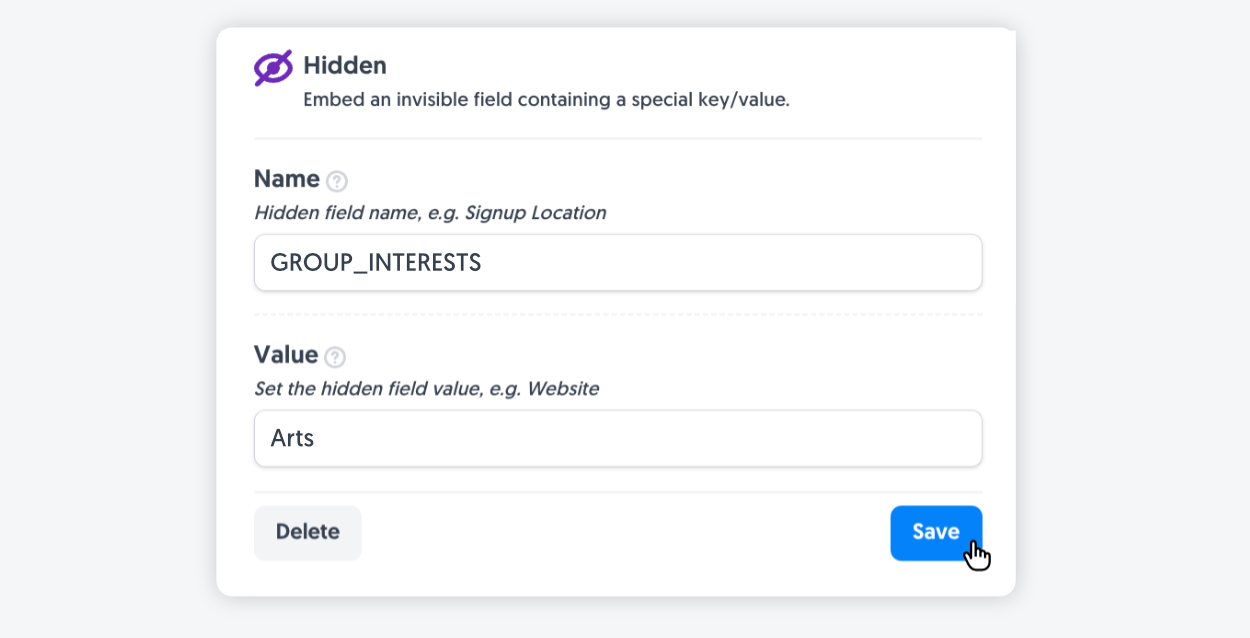
Publish the form and submit it, you’ll notice the Hidden Field is not visible to the user:
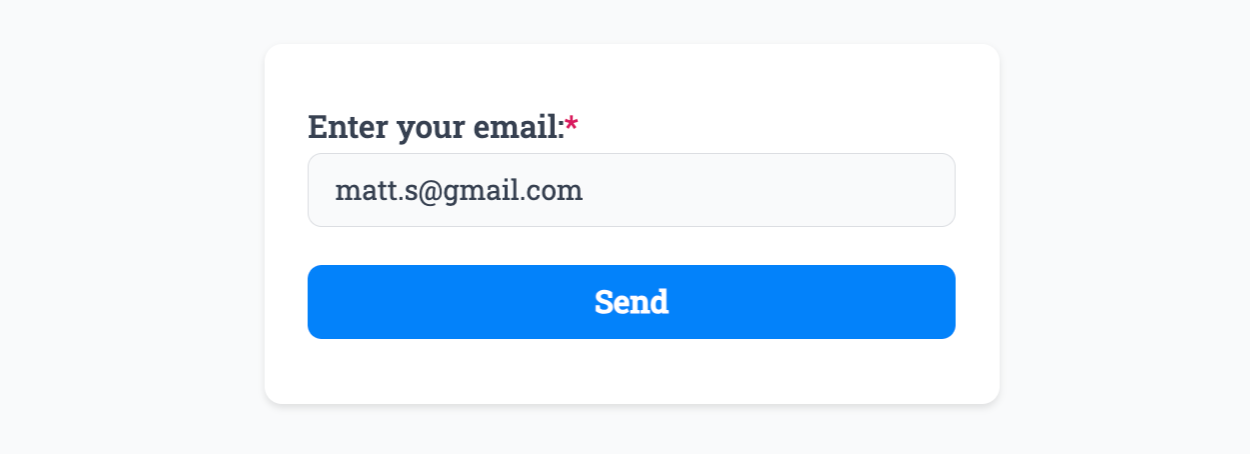 Viewing the published form the user will see
Viewing the published form the user will seeThis will construct a hidden input in your form code, so that users are automatically added to the group you’d like, without them seeing or selecting anything - useful for particular campaigns or signup locations.
Then view the new group data within Mailchimp to confirm the connection:
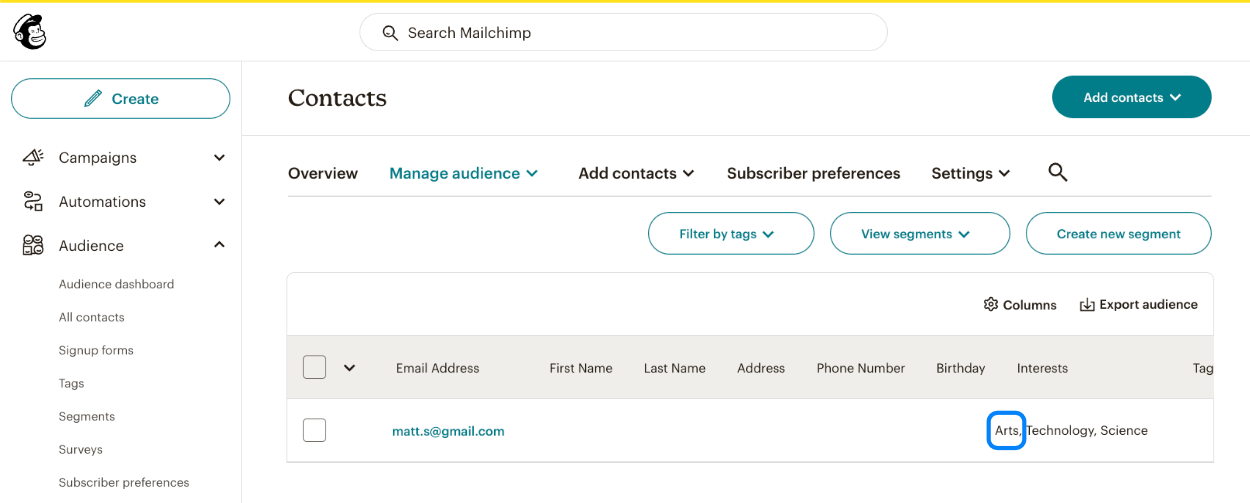
Opt-In Permission
To maintain good compliance with many data laws, it may be appropriate to use our Opt-In feature - where users can ‘agree’ to be added to your marketing list. If they don’t agree, your form response is still processed but they are not added to your Mailchimp subscribers.
Our recommended field to use for this is the Yes/No Field, where the user can select a simple Yes or No choice to agree to be signed up:
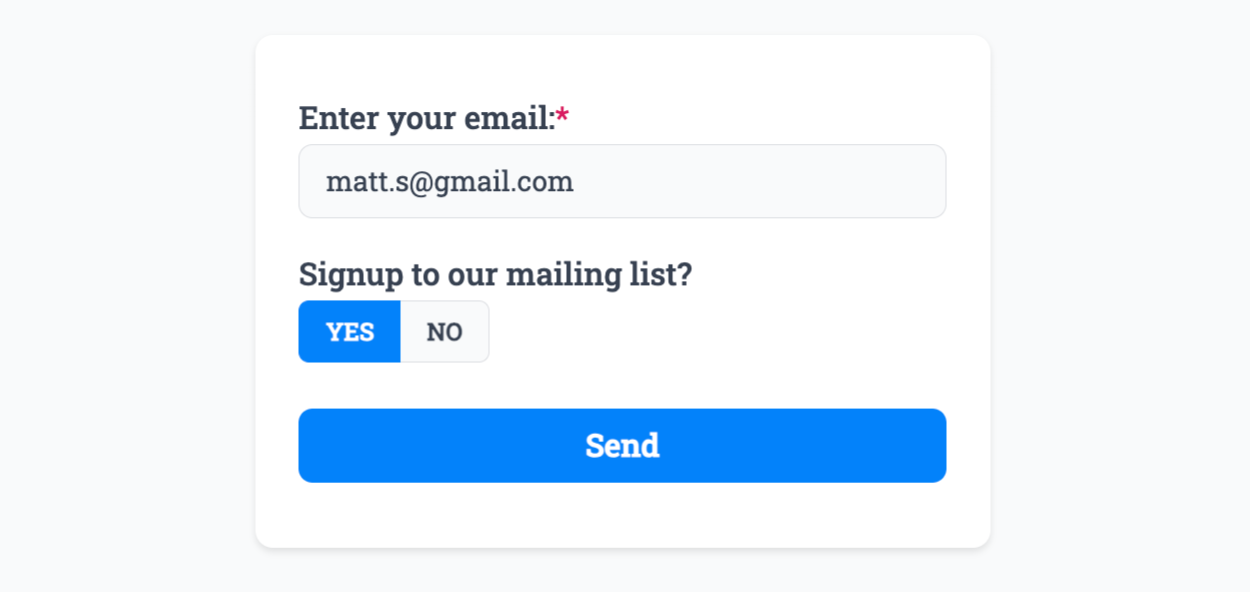 Field type ‘Yes/No’, custom name is ‘OPT_IN’
Field type ‘Yes/No’, custom name is ‘OPT_IN’While editing the Yes/No Field, click Edit and find More Options and enter OPT_IN as the value, hit save and Publish the form:

If the user selects “No” - the form will still be submitted, but it won’t bring a new subscriber into Mailchimp.
The Multi-Select Field may also be used if desired, however must only include one option:
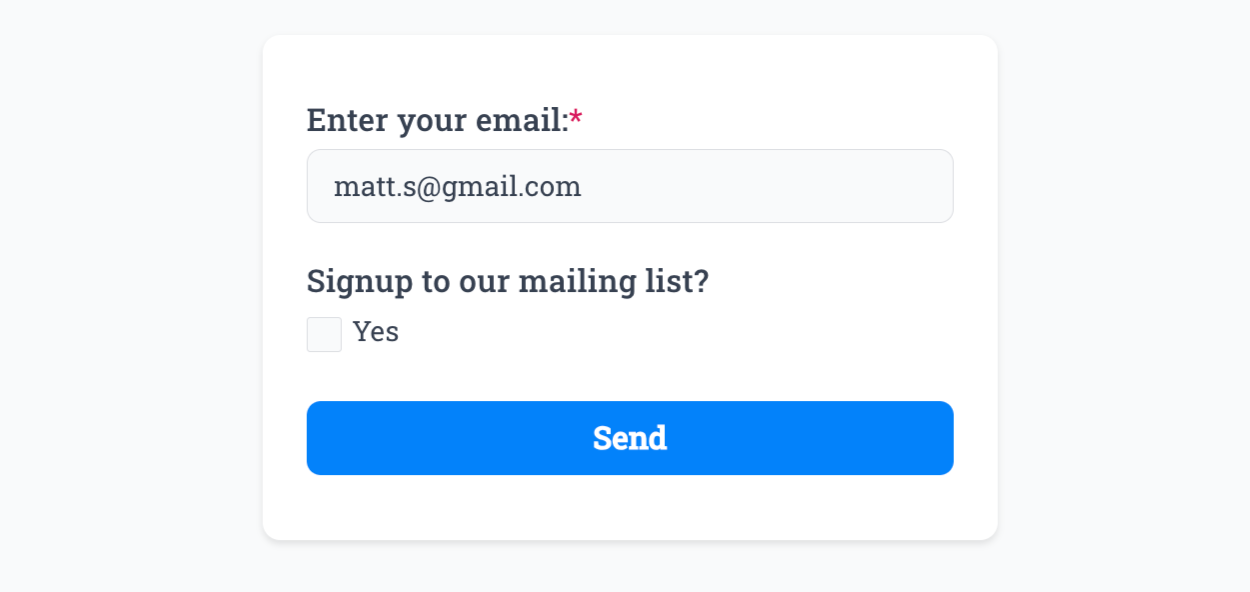 Field type ‘Multi-Select’, custom name is ‘OPT_IN’
Field type ‘Multi-Select’, custom name is ‘OPT_IN’Explainer: Only one option is allowed when using the Multi-Select Field due to the flexibility of the field and associating a selected item with what you intend to be a ‘Yes’ vote to opting a user in. If two or more Multi-Select fields are used, the field will be ignored by the Mailchimp Plugin. If the field is also marked as Required the field is also ignored, as you can’t force a user to agree.
Adding Tags
Mailchimp also supports adding ’tags’ to subscribers, and is fully supported by the Mailchimp Plugin. ‘Tags’ in Mailchimp are not created inside Mailchimp, it is up to you to create them in your form - and we send them.
There are two ways you can setup tags, either let the user choose which tags from a Multi-Select Field - or you use a Hidden Field.
Option 1: Multi-Select Allow the user to select the tags.
After adding the Multi-Select Field, create your tags as options and add TAGS as the custom name value, hit Save and Publish the form:

Select a tag or two, and submit the form:
 Field type ‘Multi-Select’, custom name is ‘TAGS’
Field type ‘Multi-Select’, custom name is ‘TAGS’Then view the new tags data within Mailchimp to confirm the connection:
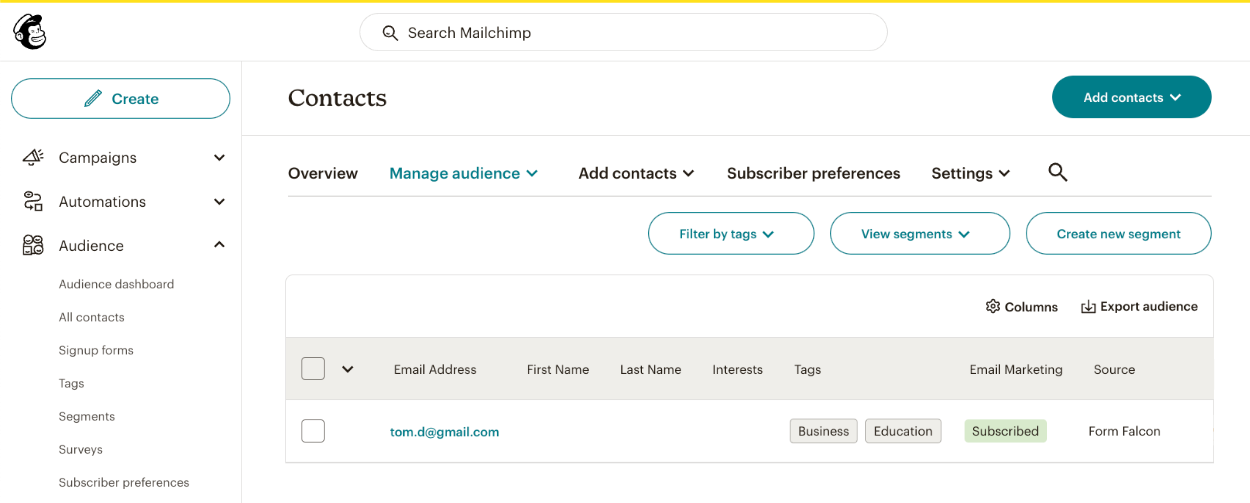
Option 2: Hidden Field Predefine the tags for the subscriber in a hidden field.
After adding the Hidden Field, add TAGS as the Key and a comma-separated list of tags into the Value, hit Save and Publish the form:
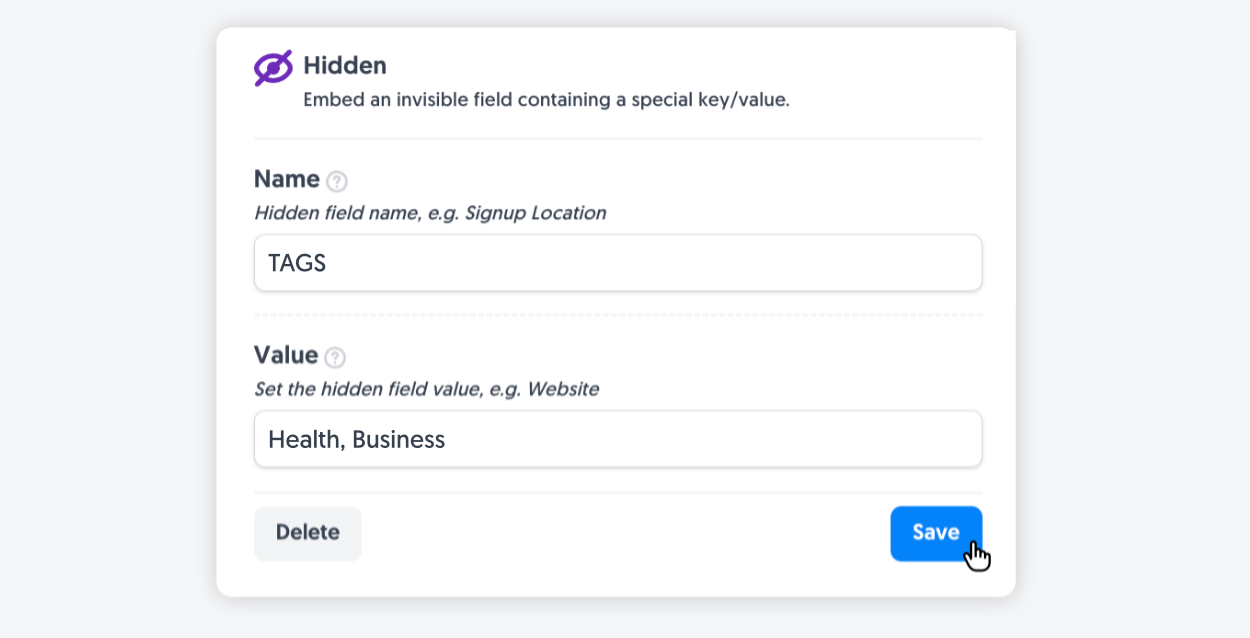
Enter an email to subscribe, then submit the form:
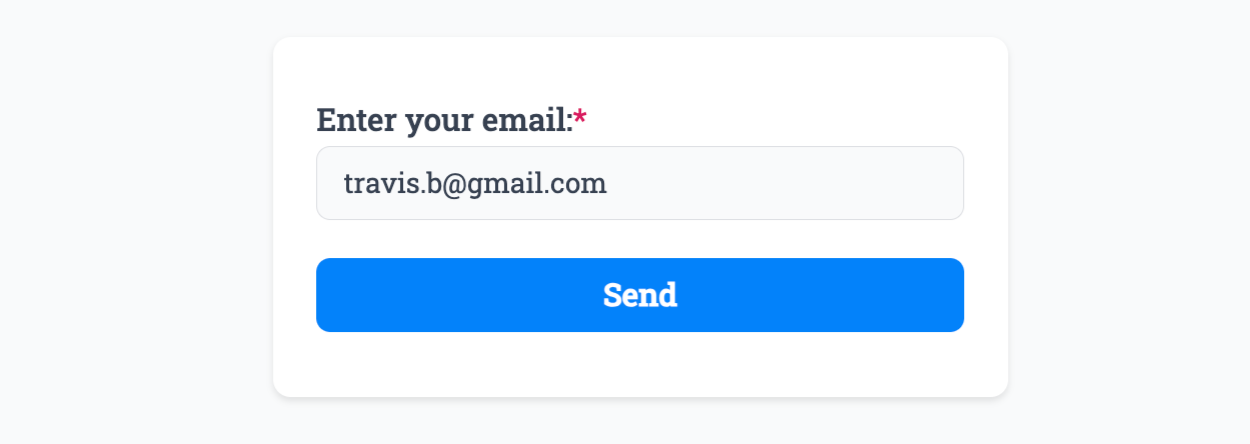 Field type ‘Hidden’, custom name is ‘TAGS’
Field type ‘Hidden’, custom name is ‘TAGS’Then view the new tags data within Mailchimp to confirm the connection:
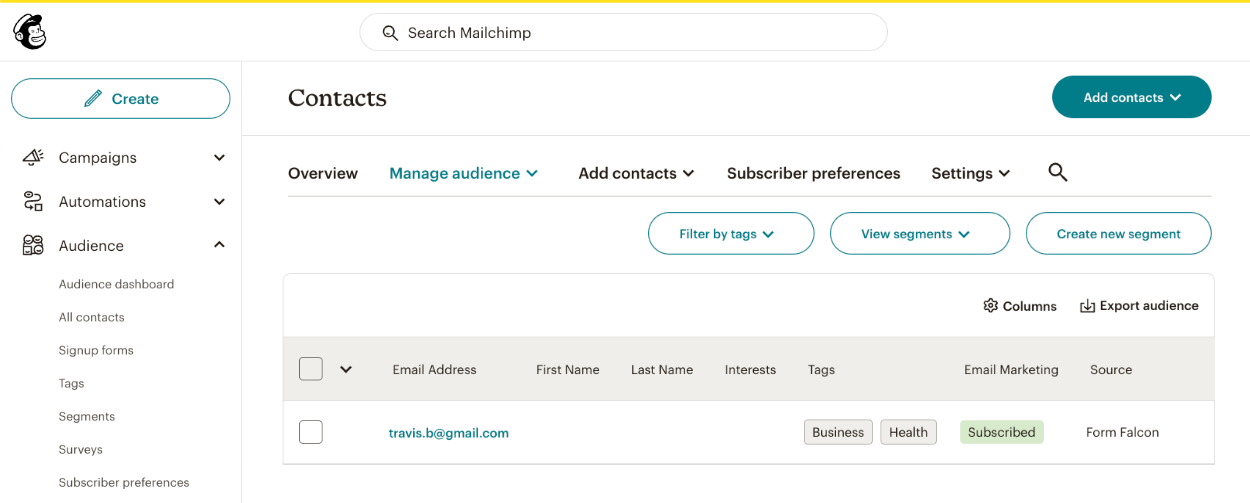
That’s it! You can contact us for help anytime.
Create incredible forms to run your business.
Join companies of all sizes using Form Falcon to manage their business, generate more sales and power custom workflows.
Try It FreeFree 30-day trial, no credit card required.